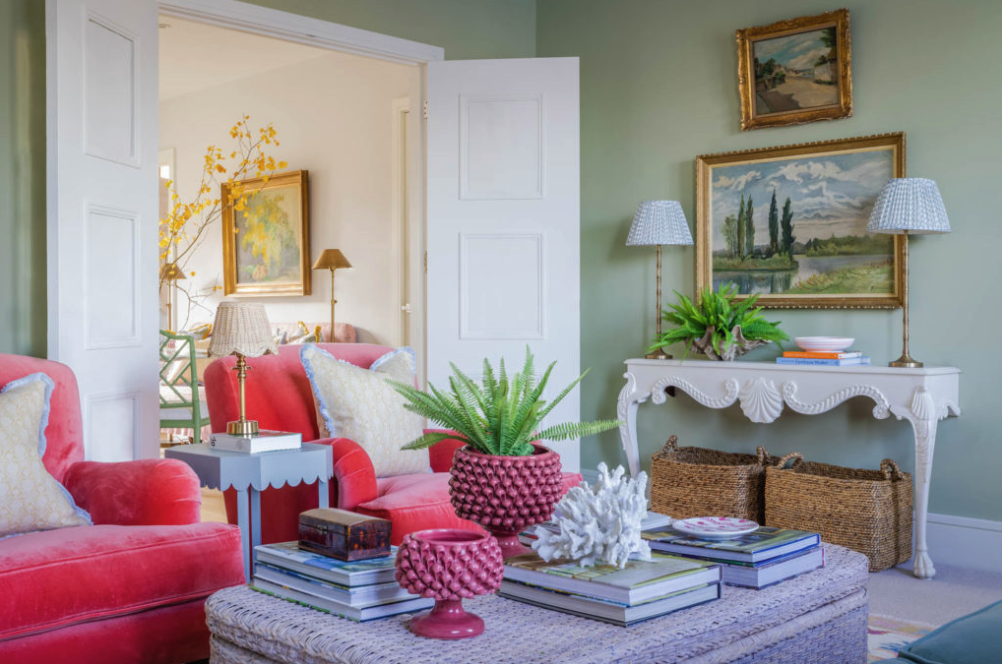
For those who find solace in aesthetics and thrive in the creation of inviting spaces, interior design is both an art form and a means of expression. The southwestern gem of Bath and the bustling heart of London are home to a rich tapestry of design excellence. From ancient Roman baths to contemporary condos, the canvas of possibility is vast. With this in mind, let’s explore the insightful design philosophies and tips from the leading interior designers from the stylish cities of Bath and London who have left their mark in these storied cities and how these tips can be applied to homes and projects anywhere.
Space Planning: The DNA of Interior Design
Space planning is akin to the DNA of a room – it dictates layout, flow, and functionality. Our expert designers emphasize the importance of understanding the unique characteristics of a space before embarking on design. They urge us to measure, visualize, and consider the subtleties of human movement and interaction within each environment.
The layout must cater to living habits and project a natural harmony. To achieve this, Bath’s designers suggest starting with the largest and most essential pieces of furniture and building the space around them. London’s designers stress the utility of multifunctional furniture for urban living, advocating for pieces that can serve more than one purpose without sacrificing style.
Color Scheme and Palette: A Canvas for Emotion
Color is a powerful instrument in an interior designer’s toolkit. It can provoke emotion, create an illusion of space, and bring about psychological responses. Our top designers counsel against hasty colour choices and dare home decorators to consider the purpose of the room. Is it a space for retreat, focus, or socializing?
In Bath, pastel palettes reminiscent of the city’s honey-coloured stone offer a serene backdrop, whereas London’s designers often suggest a more eclectic mix, reflective of the city’s diverse culture. However, a cohesive colour scheme is a universal goal. Mixing several hues requires a discerning eye; opting for a monochromatic scale ensures an elegant, uniform effect.
Furniture and Layout: Pieces that Tell a Story
Furniture and layout choices transform functionality into style. Each piece is a conversation starter, and the arrangement sets the tone for the room. Our designers propose a balance between form and function, urging readers to select statement pieces that offer functionality and aesthetic appeal.
Whether it’s the mid-century modern collections found in Bath, or the sleek, contemporary lines often seen in London, the advice remains the same: choose quality that endures. Style also comes from juxtaposition. A harmonious blend of modern and antique creates an eclectic yet balanced home.
Lighting Design: Sculpting with Shadows
Lighting design is often described as the unsung hero of great interiors. It can transform a space dramatically, create focal points, and highlight key features. Our top designers offer practical tips, such as layering lighting to achieve flexibility in ambience and functional needs.
In Bath, natural light is revered, and spaces are often designed to maximize its influence. In London, spaces work around artificial light constraints, with a focus on innovative solutions. Regardless of location, the advice aligns with the importance of adaptable lighting. From the soft glow of a table lamp to the crisp light of a spotlight, each serves a vital purpose in the space.
Accessories and Styling: The Personal Touch
The art of accessorizing and styling a room can be as intricate and varied as the tastes of those inhabiting it. Decorative elements offer a chance to express personality and tie a room together. Expert designers encourage the use of items with stories as they add depth and meaning to a space.
In Bath, natural materials like warm woods and woven textiles blend with the environment’s history, while in London, a more cosmopolitan approach might lead to incorporating travel finds that reflect the global city. Above all, accessories should complement the room’s design, not clutter it. The rule of three for groupings and the concept of negative space are guidelines that often lead to a well-styled, welcoming space.
Design as an Ongoing Dialogue
As we traverse through these invaluable design tips, it becomes apparent that interior design is an ongoing dialogue. It’s a conversation between the space and the people it houses, a narrative weaving through history and modernity, and an embodiment of individuality within a collective experience.
The input and expertise from Bath’s and London’s design trailblazers invite us to partake in this conversation, to observe and respect the particularities of our spaces, and to curate environments that not only serve our needs but exude the essence of who we are. Whether designing a first home or renovating an inherited space, these insights can guide us as we craft interiors that resonate and endure.
For those on a design journey, remember that transformation is possible in every space, no matter the size or starting point. It’s about creating balance, defining a personal style, and fostering a connection to the spaces we inhabit. With the wisdom shared by the top interior designers from Bath and London, the canvas of your home is ready to reflect a unique and elegant artistry.
